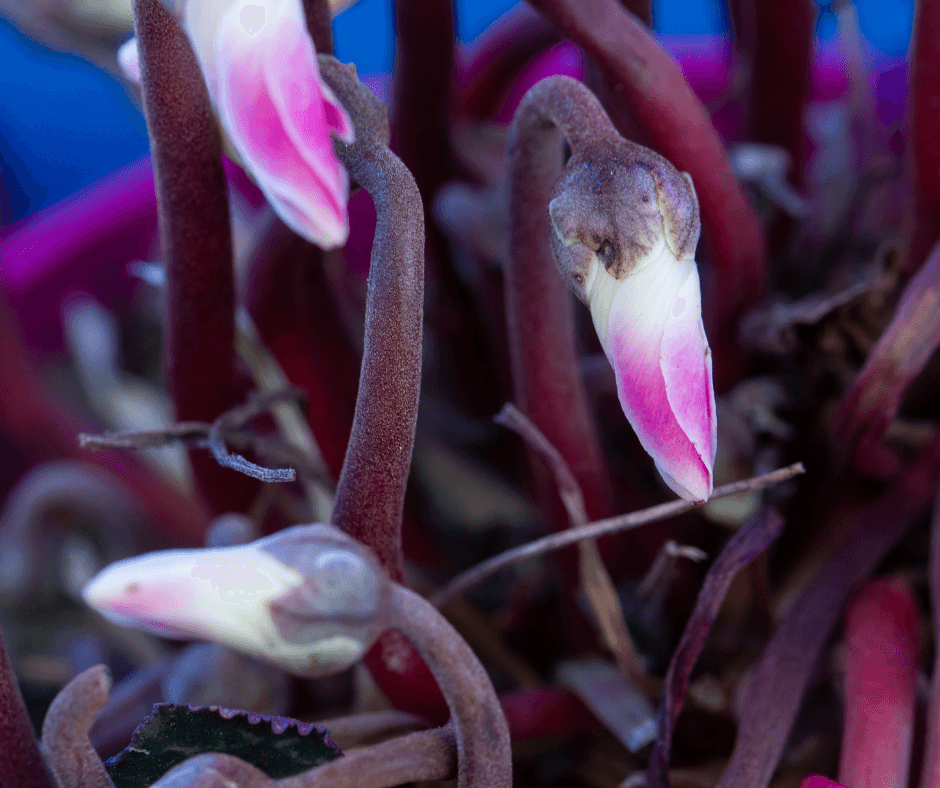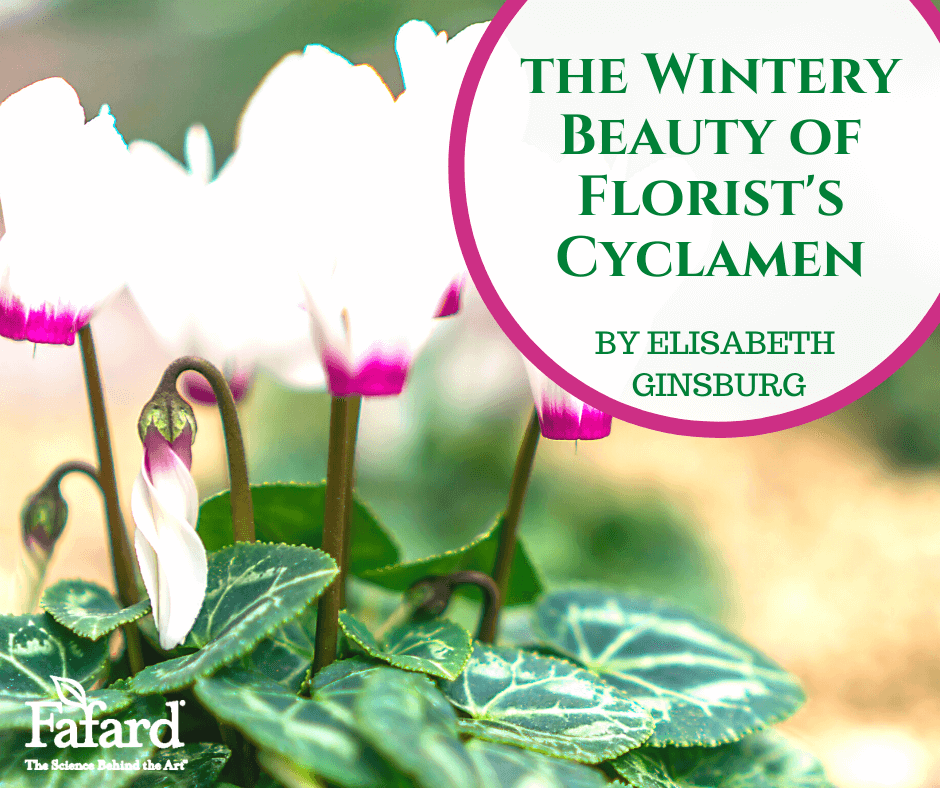
Florists’ cyclamen (Cyclamen persicum hybrids) is a great imposter. Despite the Latin name persicum, they are not from Persia (modern-day Iran) but hailed from nearby countries, including Syria, Turkey, Lebanon, Israel, Jordan, Algeria, and Tunisia. Though the graceful flowers might make you think of orchids, cyclamens actually reside in the primrose family, Primulaceae. The leaves are also cleverly disguised, with patterning that might be mistaken for marble or damask fabric.
Subterfuge aside, florists’ cyclamens beguile holiday plant buyers with their ravishing good looks, and every winter multitudes of them find their way into homes, offices, houses of worship, and other public and private spaces.
Cyclamen with Dancing Flowers and Swirling Leaves
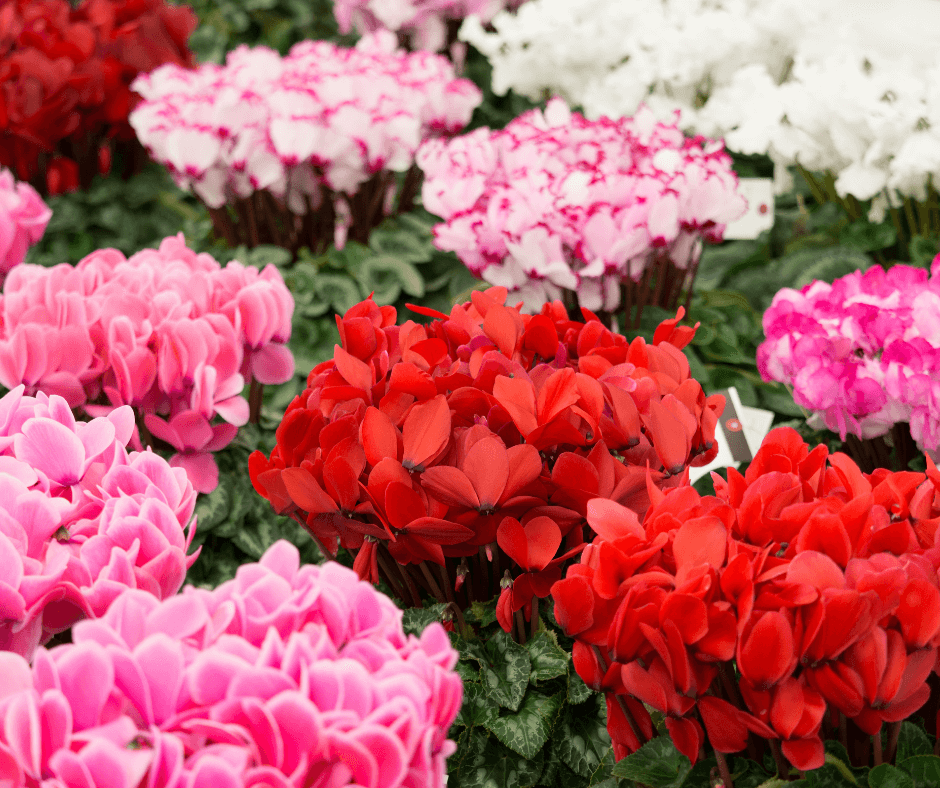
Rising 6 to 10 inches tall and equally wide, cyclamen plants dazzle with basal mounds of heart-shaped leaves marbled in silvery shades. They almost swirl before your eyes. Slender stems support nodding buds that resemble tightly furled umbrellas. Once open, each bloom features five backswept petals that may be pink, red, violet, lavender, white, or in combinations of two or more of these colors. The petal edges are either smooth or exuberantly ruffled. The combination of swaying stems and vibrant colors has led more than one observer to liken a pot of cyclamen in full bloom to a flock of butterflies.
Cyclamen’s Wild Ancestors
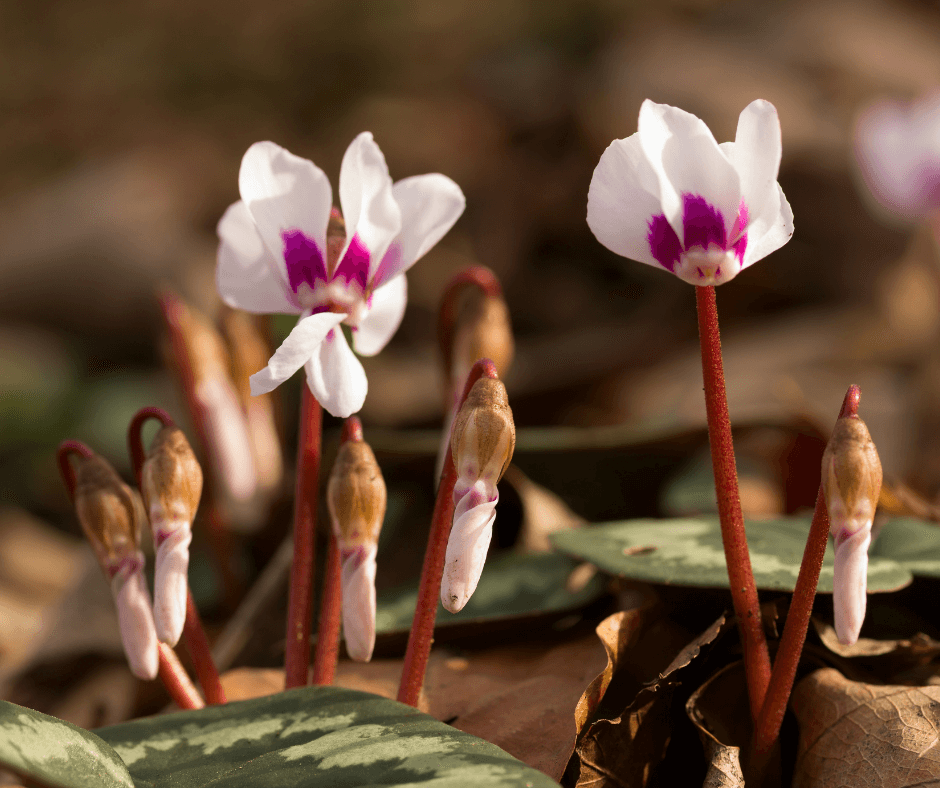
In the beginning, Cyclamen persicum was a pretty wildflower that barely hinted at the charms of its modern domestic descendants. The species made it to Europe around 1700, but breeders first took an interest in them in the early nineteenth century and have been working on them ever since. Most breeding occurs in England, continental Europe, and Japan. All of that breeding and propagating work set the stage for cyclamens to burst onto the mass-merchandising scene nearly 50 years ago.
New Cyclamens Get Bigger and Better
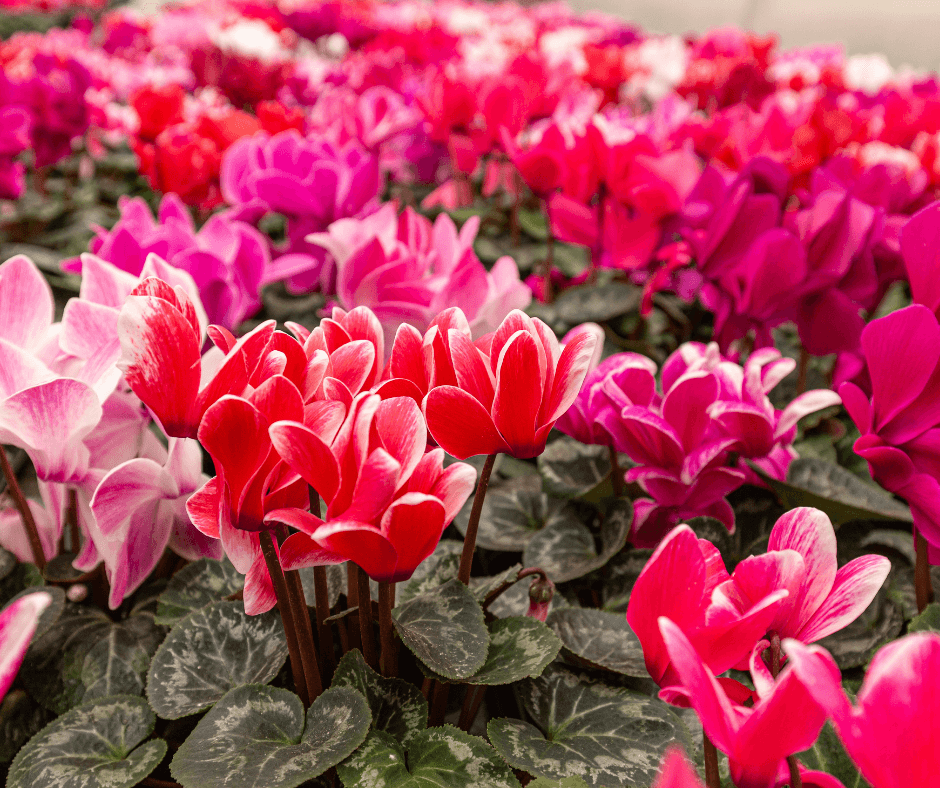
Consumers have always loved big flowers, so breeders have made that trait a priority. Once they bulked the flowers up, plantsmen produced larger plants with a wider range of flower colors. Double flowers and those with contrasting picotee petal edges also emerged from the selective breeding process. Each year it seems that the flowers get bigger, bolder, and more numerous.
Fragrant Cyclamen
One trait that was all but lost in the breeding process was fragrance. But that began to change around 2000, when hybridizers started crossing Cyclamen persicum with a fragrant Mediterranean species, Cyclamen purpurascens. The resulting plants were somewhat smaller than standard florists’ cyclamen, but boasted pronounced fragrance, sometimes reminiscent of roses. Now scented varieties are available in many places—to find them just follow your nose in the greenhouse section of a well-stocked nursery or garden center. One beautiful and fragrant variety to look for is the exceptional, hard-to-find, Cyclamen purpurascens ‘Green Ice’.
Holiday Cyclamen Care

Fragrant or not, all florists’ cyclamens need care once they arrive home from the store. “Care” means removing the decorative foil around the pot and positioning it in a cool place with bright, indirect light. A surplus of direct sun will caused scorched leaves.
If you want to repot it after the holidays, use a quality medium like Fafard® Ultra Potting Mix with Extended Feed, and make sure the top of the root ball is level with the top of the soil in the new container. (Click here for an overview about how to repot house plants.) High humidity is a plus, so mist regularly or place the pot atop a saucer filled with pebbles. Add water to the saucer, but make sure the base of the pot is not submerged. Cyclamen appreciate moisture but detest wet feet. Water when the top of the soil is dry and aim the spout of your watering can around the edges of the pot.
Post-Holiday Cyclamen Care

With proper care, a cyclamen with some open flowers and a few buds should bloom for three or more weeks. Once the bloom period is over, gradually cut down on watering. It is not uncommon for plants to go into a natural dormancy in summer, which corresponds to a summer dry period to which they are acclimated. This is the point when most people throw a cyclamen out, thinking that it has died. Instead of doing that, you may want to try for a second cyclamen act.
Move the pot to a cool, moderately dry location for a few weeks and then, attempt a resurrection by soaking the soil thoroughly and bringing the pot back to a spot with bright, indirect light. Wait until you see signs of sprouting before watering again, and resume a regular watering schedule. Feed with commercial houseplant fertilizer according to package directions. With a bit of luck, the cyclamen will begin its growth cycle anew.
If for some reason the cyclamen has actually died, skip the guilt and purchase another one. The death was probably not your fault. When thousands of plants are raised in a carefully controlled environment, and forced into bloom at a specific time, they may not have a second season’s worth of energy. Ironically, in the Victorian language of flowers, cyclamens, which seem so bright and cheerful during the winter, are symbolic of goodbyes.
